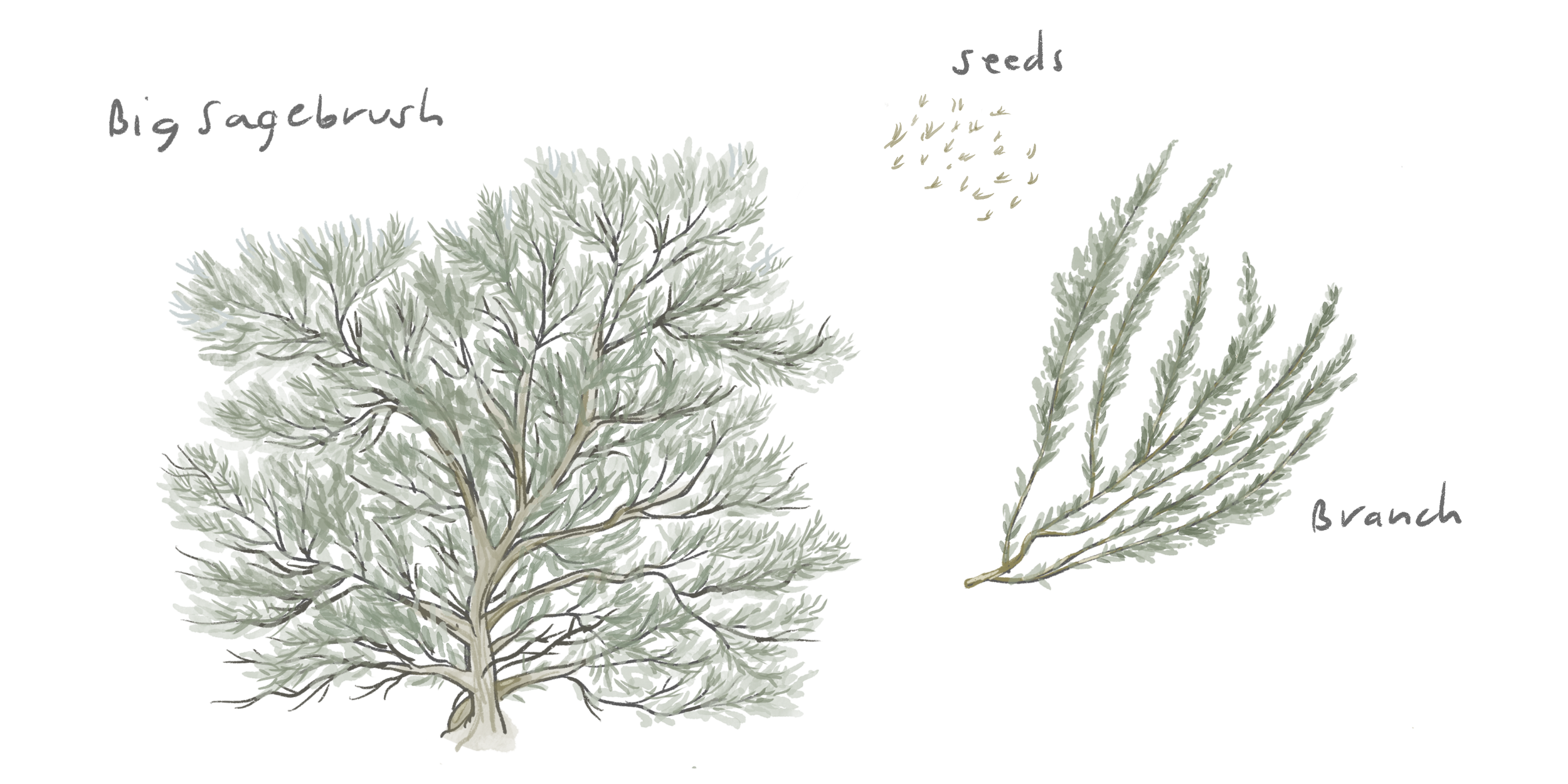by Daniel Misch, Moses Coulee Assistant Manager
Sagebrush is the lifeblood of shrub-steppe ecosystems in Eastern Washington. It provides essential food, shelter, and water for the wildlife and communities that rely on this arid landscape. Today, only a fraction of the nearly 300 million acres that once spanned North America, is considered in-tact and in immediate need of conservation. TNC Washington stewards nearly 33,000 acres of sagebrush through a complex of four preserves—Moses Coulee, McCartney Creek, Beezly Hills and Badger Mountain—interspersed with lands managed by the Department of Fish and Wildlife and the Bureau of Land Management, forming one of the largest continuous sagebrush habitats in Washington.
Illustration by Erica Simek Sloniker / The Nature Conservancy.
Today, TNC’s land stewards are in the process of restoring the iconic sagebrush, following the devastation caused by the 2020 Pearl Hill Fire burning approximately 400,000 acres total, and nearly all of TNC’s Moses Coulee Preserve. Fire isn’t entirely unfamiliar in the shrub-steppe, historically occurring every 30-100 years, but as climate change progresses, fire cycles have shifted to 5-15 years, leading to less sagebrush coverage and declining habitat availability for wildlife.
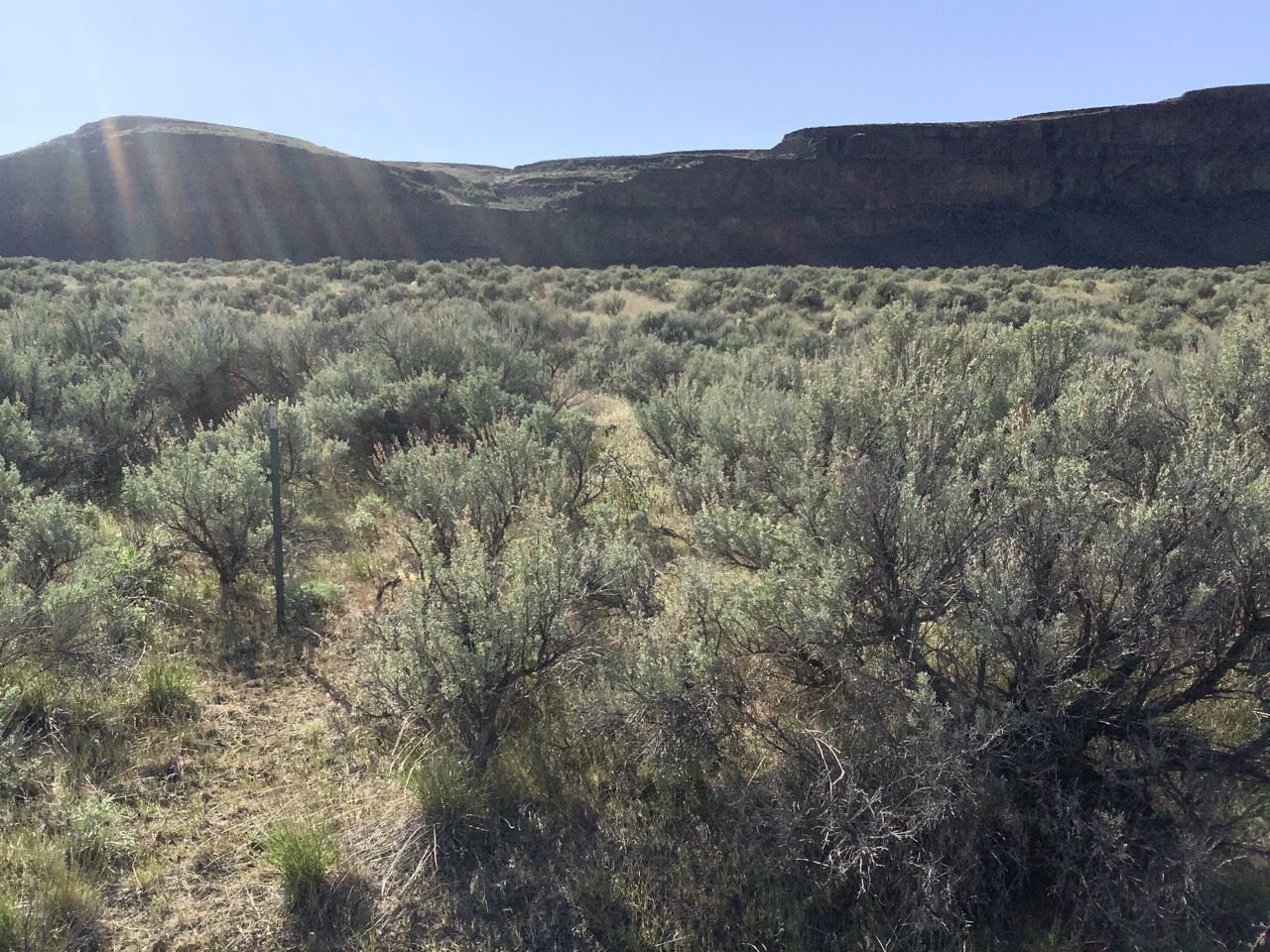

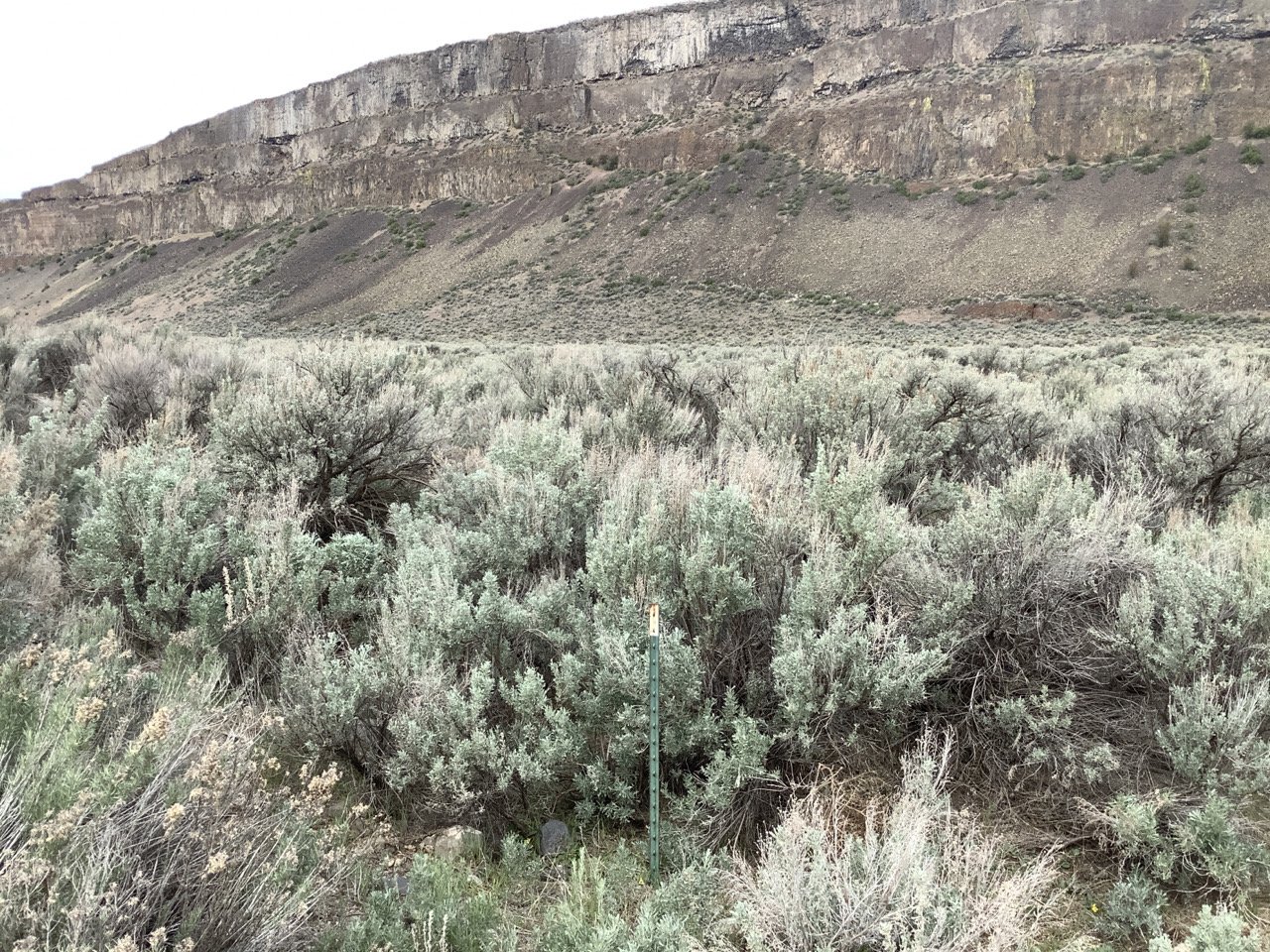
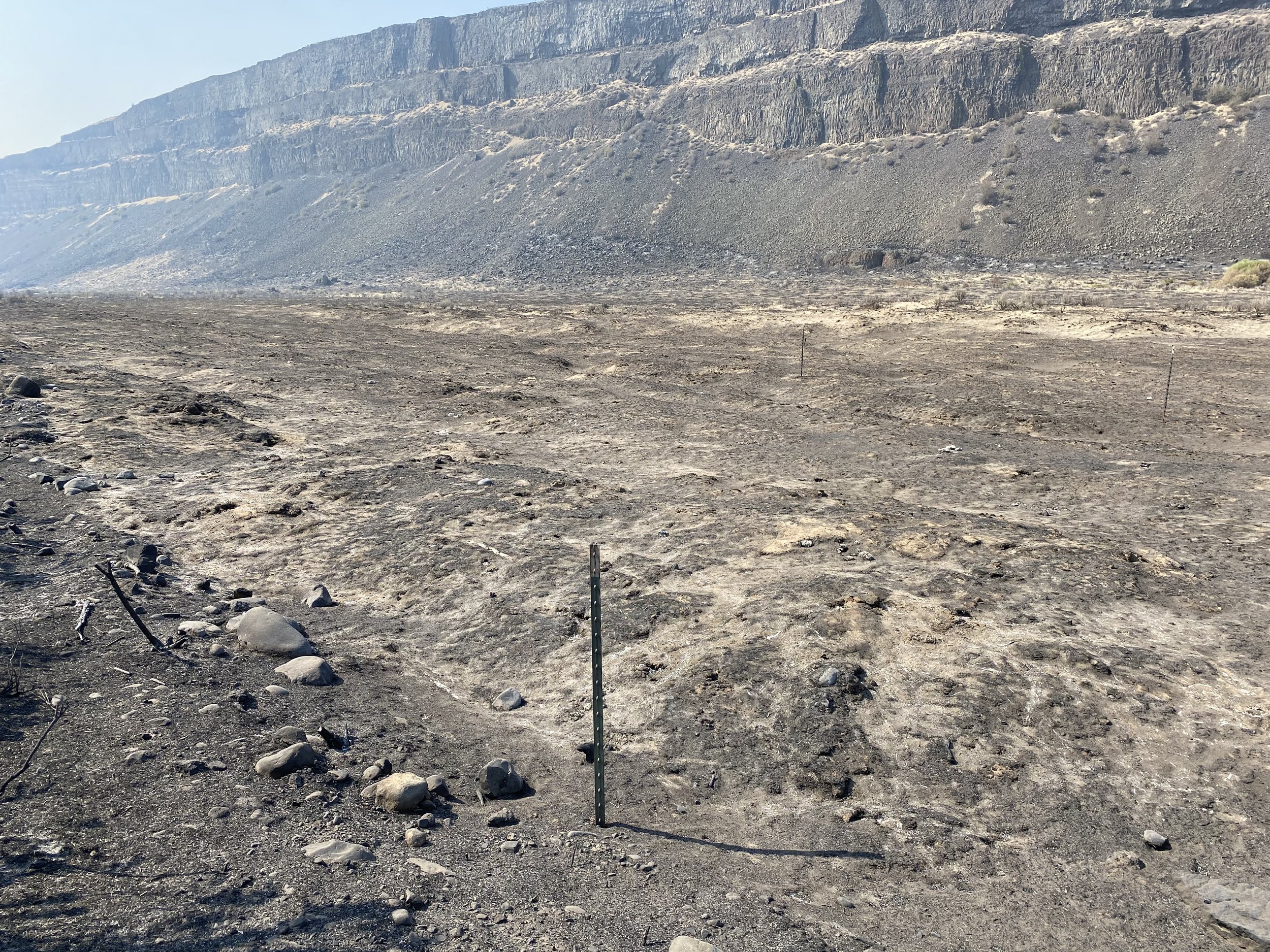
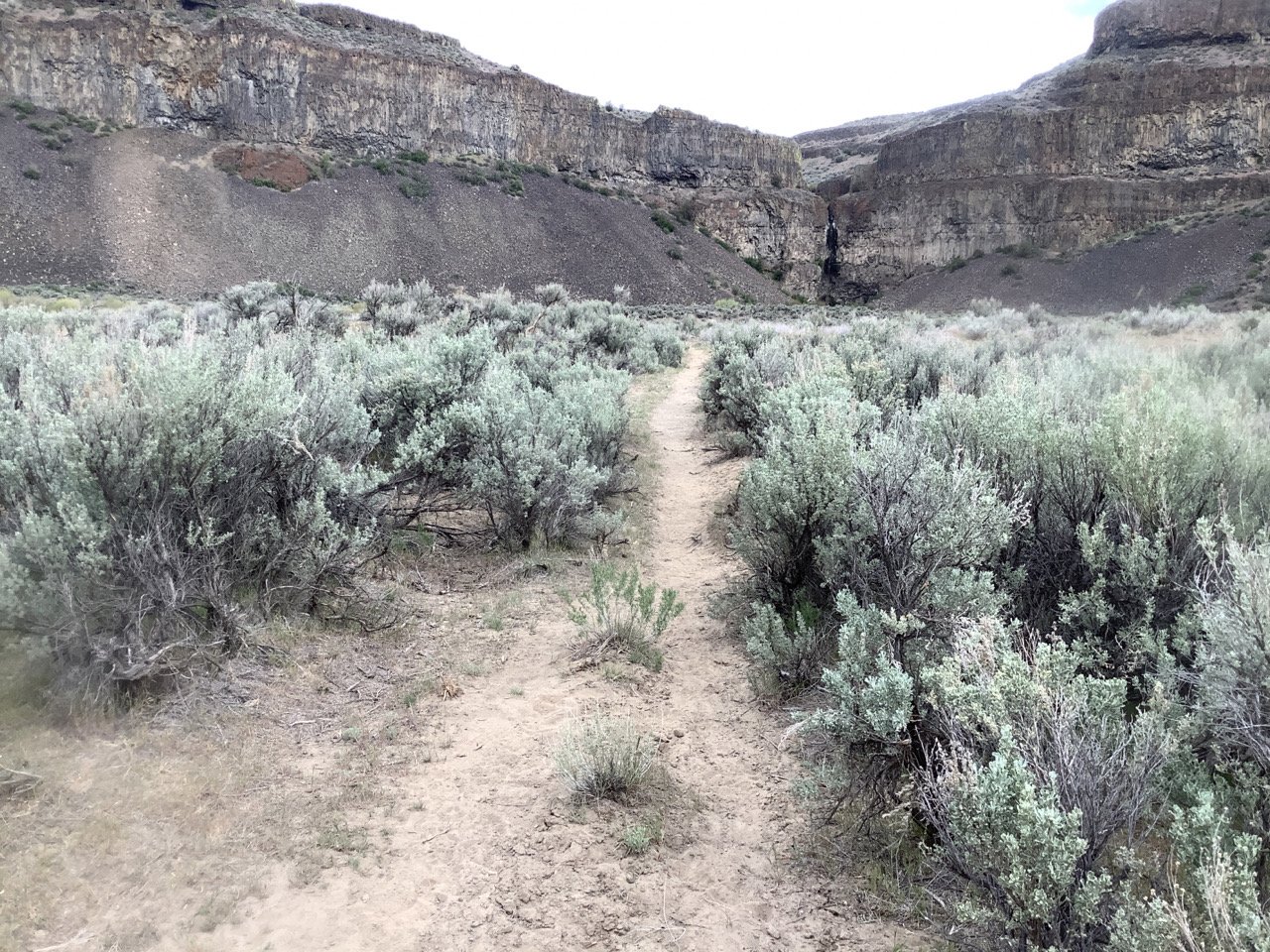
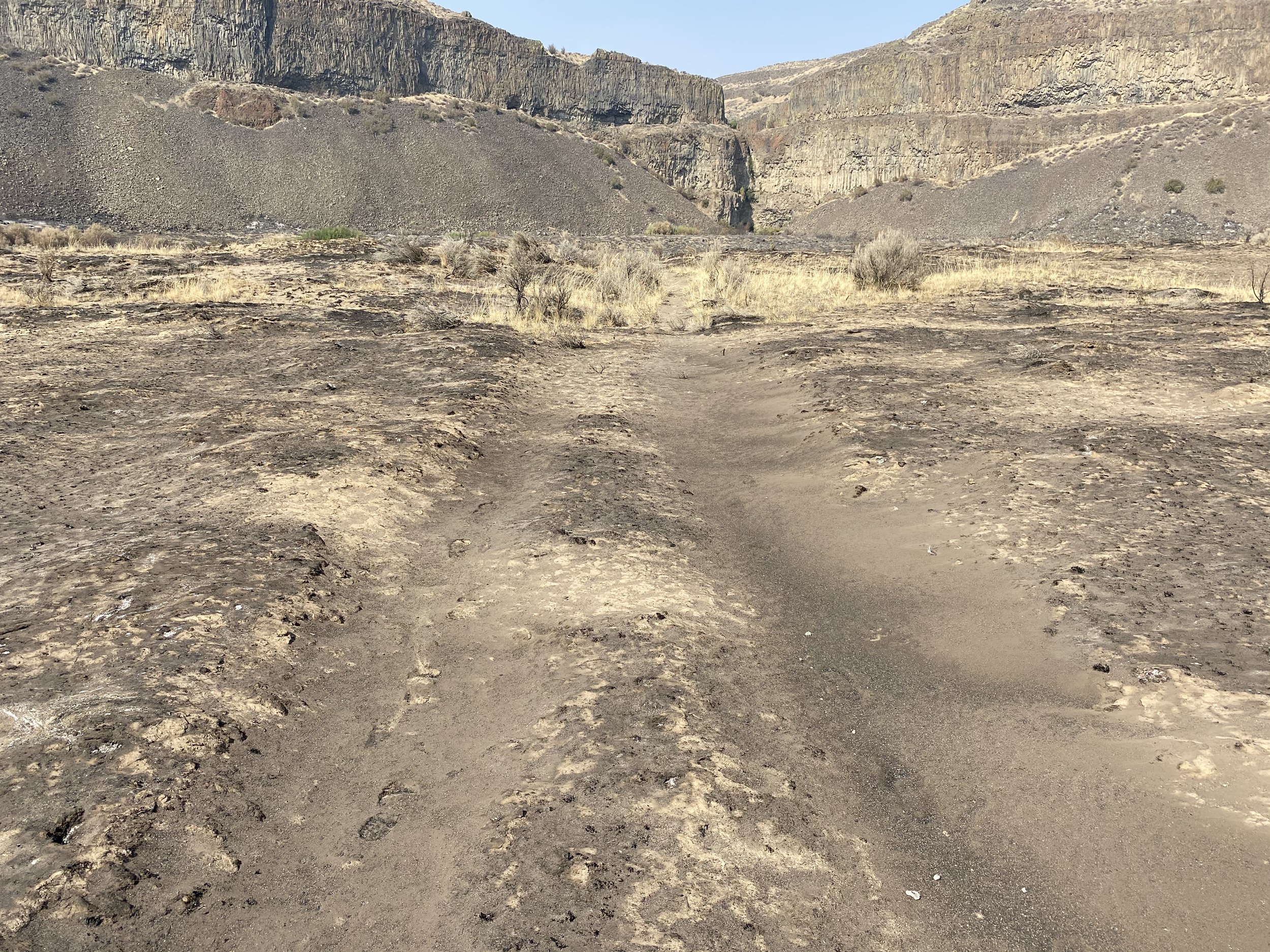
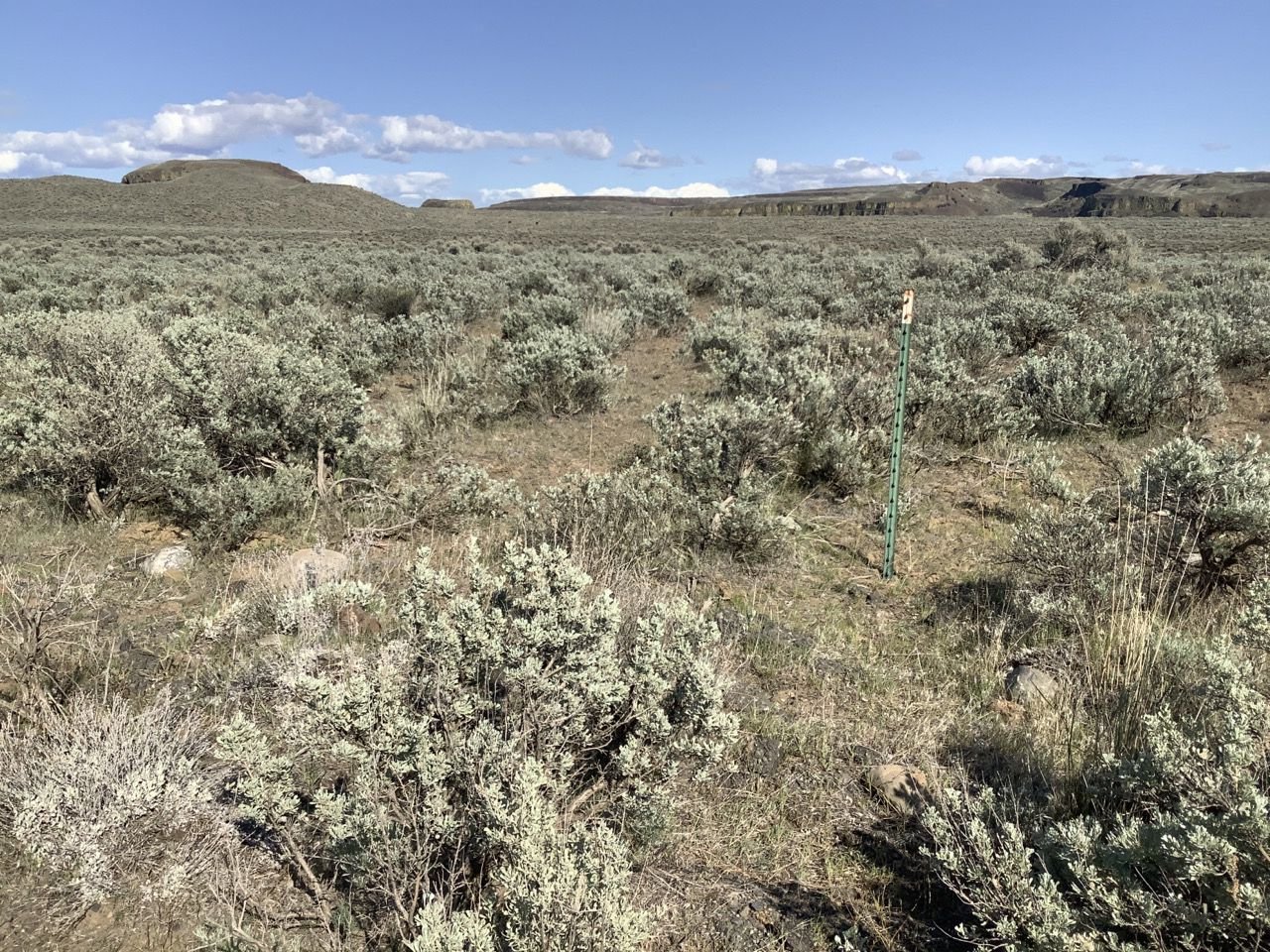
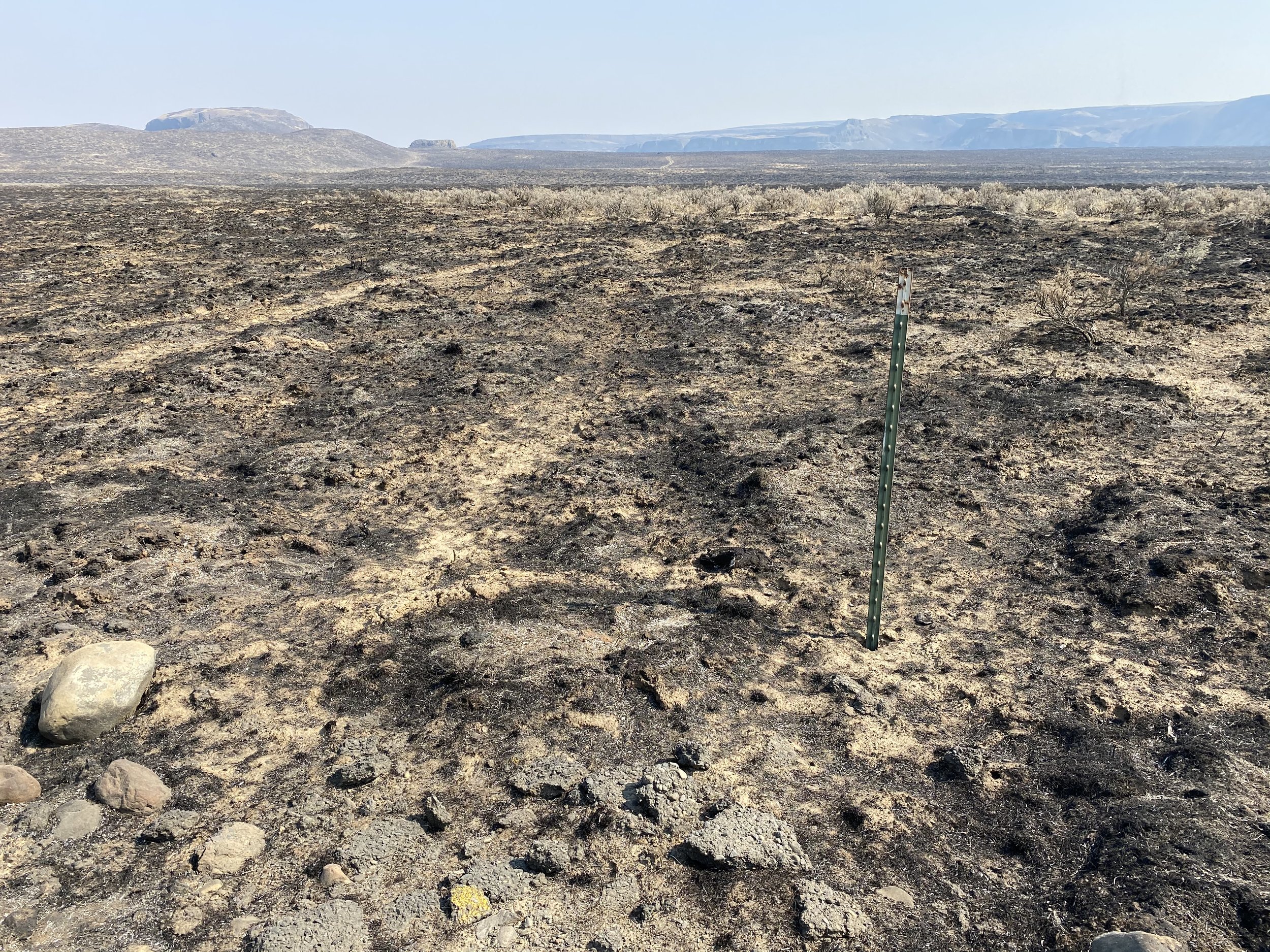
Typically, sagebrush is a resilient plant with a natural seed bank that withstands fire, leaving sagebrush to re-sprout across the barren landscape within a few short years. Unfortunately, Pearl Hill burned with such intensity and heat over a large area that the seed bank no longer existed to naturally replenish the site. Instead, TNC’s stewardship team determined that active restoration was necessary, and a plan was hatched: through a combination of spreading native sagebrush seed and planting one-year old sagebrush plugs.
Volunteers gather to plant the final 500 sagebrush plugs at Moses Coulee. Credit: Quena Batres/TNC
Starting in the Fall of 2021, TNC staff and volunteers ventured three miles south of the burn scar to collect sagebrush seeds from plants that had been spared by the fire. As part of the plan, it was determined that collecting seeds from a locally adapted site provided greater assurance of survival since the sagebrush plants are already acclimated to local conditions. And over the course of a year, BFI Native Seeds in Moses Lake grew the seed into 5,000 healthy shrub plugs.
Last fall as the plugs hit the one-year mark, TNC staff and volunteers successfully planted half the plugs, but the perfect storm of competing projects and an unseasonably earlier freeze meant the rest had to wait until spring. The remaining plugs were tucked into mulch beds, then covered with a frost blanket and heavy-duty tarp to overwinter. The idea was that the plugs retain enough moisture in the mulch and still experience normal winter temperatures, so they go dormant until it was time to plant. As soon as the ground thawed in March, dedicated groups of volunteers from our Hunter Stewards program, donors, and TNC staff helped plant the remaining plugs.
TNC Volunteer Coordinator, Quena Batres plants a sagebrush plug. Credit: Emily Heber/TNC
There is still a lot of work ahead to restore Moses Coulee, but with sagebrush growing back in across the landscape, there is a renewed sense of hope for wildlife and communities that rely on the land.


